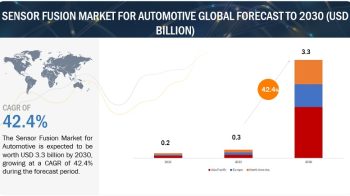The top three fastest-growing ceramics market segments are transparent ceramics, 3D printing ceramics, and ceramic textiles.
For More Context Download PDF Brochure of this Report at http://www.marketsandmarkets.com/pdfdownload.asp?id=177458889
1. Transparent Ceramics:
Transparent ceramics are highly specialized ceramic materials that have high thermal and chemical stability, good hardness, and mechanical strength. Transparent ceramics have the potential to resolve material challenges in the optoelectronics, power generation, aerospace, defense, and military applications.
The transparent ceramics market is projected to grow at a CAGR of 23.8%, by value, from 2016 to 2021. Polycrystalline transparent ceramics is the fastest-growing segment of the global transparent ceramics market, owing to the increasing application of polycrystalline ceramics in emerging applications, such as biomaterials, thermography, temperature IR sensors, and so on. Optics & optoelectronics is the largest and the fastest-growing end-use industry segment of the transparent ceramics market, followed by aerospace and defense & security. Asia-Pacific is the largest market for transparent ceramics, by value, and the region’s market is also projected to grow at the highest rate between 2016 and 2021.
2. 3D Printing Ceramics:
The 3D printing ceramics market is expected to register high growth during the forecast period, with increase in the number of grades of ceramic materials and their widespread availability in the market. The market is projected to grow at a CAGR of 29.6% for value and 31.8% for volume from 2016 to 2021. Fused silica and glass are considered as key types of the 3D printing ceramics market. The fused silica segment led the 3D printing ceramics market. Increasing demand from high energy laser applications and envelope material for ultraviolet light sources is driving the market for fused silica in the 3D printing ceramics market. The glass segment of the 3D printing ceramics market is expected to grow at the highest rate, in terms of volume, from 2016 to 2021.
The use of 3D printing ceramics is rapidly increasing in varied end-use industries, such as aerospace & defense, healthcare, automotive, manufacturing & construction, and consumer durables. In terms of volume, the healthcare segment is projected to grow at the second-highest rate during the forecast period. By region, the market in South America is expected to grow at the highest rate from 2016 to 2021, followed by Asia-Pacific.
3. Ceramic Textiles:
Ceramic textiles are made of ceramic fiber products and can withstand extreme temperatures. They also demonstrate excellent ability to resist chemical attacks. Due to their superior heat-resistant properties, ceramic textiles are widely used in industrial plants where high heat resistant materials are required.
RCF (refractory ceramic fiber) dominated the global ceramic textiles market and is projected to grow at a higher rate between 2016 and 2021, followed by the low bio-persistent fiber. The increasing use of RCF in aerospace, marine, and petrochemical industries is driving the overall ceramic textiles market.
By form type, ropes and braids accounted for the second and third-largest market shares, in terms of volume. The industrial sector was the largest end-use industry of the ceramic textiles market in 2015. Asia-Pacific is estimated to be the largest and the fastest-growing market for ceramic textiles. The growing automotive and petrochemical industries are further driving the ceramic textiles market in the Asia-Pacific region.
Market Leaders:
Ceramics are inorganic, non-metallic solid materials comprising metal, non-metal or metalloid atoms primarily held in ionic and covalent bonds. Ceramics are usually made using clay, earthen elements, powders, and water and molding them into desired forms. The molded ceramics are then fired in a high temperature oven known as a kiln.
The top 10 ceramics are transparent ceramics, technical ceramics, 3D printing ceramics, electronics ceramics & electrical ceramics, ceramic textiles, ceramic matrix composites, ceramic coatings, ceramic inks, ceramic fibers, and bioceramics & piezoceramics (medical ceramics). These ceramics have major applications in industries such as aerospace, military & defense, industrial, automotive, construction, consumer goods & electronics, healthcare, home appliances, energy & power, and so on.
| SN | Company | Ceramics Market Offering |
| 1 | Morgan Advanced Materials | Ceramic Coatings |
| Ceramic Fibers | ||
| Technical Ceramics | ||
| Electronics Ceramics & Electrical Ceramics | ||
| Ceramic Textiles | ||
| Bioceramics and Piezoceramics | ||
| 2 | CeramTec GmbH | Transparent Ceramics |
| Technical Ceramics | ||
| Electronics Ceramics & Electrical Ceramics | ||
| Ceramic Matrix Composites | ||
| Bioceramics and Piezoceramics | ||
| 3 | CoorsTek, Inc. | Transparent Ceramics |
| Technical Ceramics | ||
| Electronics Ceramics & Electrical Ceramics | ||
| Ceramic Matrix Composites | ||
| Ceramic Textiles | ||
| Bioceramics and Piezoceramics | ||
| 4 | Saint Gobain S.A. | Ceramic Coatings |
| Technical Ceramics | ||
| Bioceramics and Piezoceramics | ||
| 5 | Ceradyne, Inc. (3M Company) | Technical Ceramics |
| Electronics Ceramics & Electrical Ceramics | ||
| Ceramic Textiles | ||
| 6 | Kyocera International, Inc. | Technical Ceramics |
| Electronics Ceramics & Electrical Ceramics | ||
| Ceramic Textiles | ||
| Bioceramics and Piezoceramics | ||
| 7 | Rauschert Steinbach GmbH | Technical Ceramics |
| Electronics Ceramics & Electrical Ceramics | ||
| Ceramic Textiles | ||
| Bioceramics and Piezoceramics | ||
| 8 | Ibiden Co., Ltd. | Ceramic Fibers |
| Ceramic Textiles | ||
| 9 | Rath Inc. | Ceramic Fibers |
| Ceramic Textiles | ||
| 10 | Unifrax Corporation | Ceramic Fibers |
| Ceramic Textiles |
The top 3 companies catering to the top 10 high growth ceramics market are Morgan Advanced Materials, CoorsTek, Inc., and CeramTec GmbH.
- Morgan Advanced Materials offers ceramic coatings, ceramic fibers, electronics ceramics & electrical ceramics, ceramic textiles, bioceramics, and piezoceramics. The company has approximately 85 manufacturing sites in more than 30 countries around the world. It had an annual revenue of USD 1.03 billion in 2015.
- CeramTec GmbH is a company based in Germany which was formed after the acquisition of Hoechst CeramTec AG by Cerasiv GmbH in 1996. The company is engaged in the manufacturing and supply of technical, engineering, and industrial ceramics, which include transparent ceramics, technical ceramics, electronics ceramics & electrical ceramics, ceramic matrix composites, bioceramics, and piezoceramics. The company primarily operates in Europe but has its other operations in the U.S. and Asia. The company’s annual revenue for 2015 was USD 556.4 million.
- CoorsTek, Inc., headquartered in the U.S., manufactures and supplies critical components and complete assemblies to many industries. The company offers transparent ceramics, technical ceramics, electronics ceramics & electrical ceramics, ceramic matrix composites, ceramic textiles, bioceramics, and piezoceramics. The company acquired various companies, such as Covalent Materials Corporation, ANCeram GmbH & Co. KG, and Dynamic-Ceramic Limited, to expand its geographical reach and presence in diverse markets. These acquisitions are expected to enhance the company’s capacity to manufacture new products, thereby helping expand its existing product portfolio.


